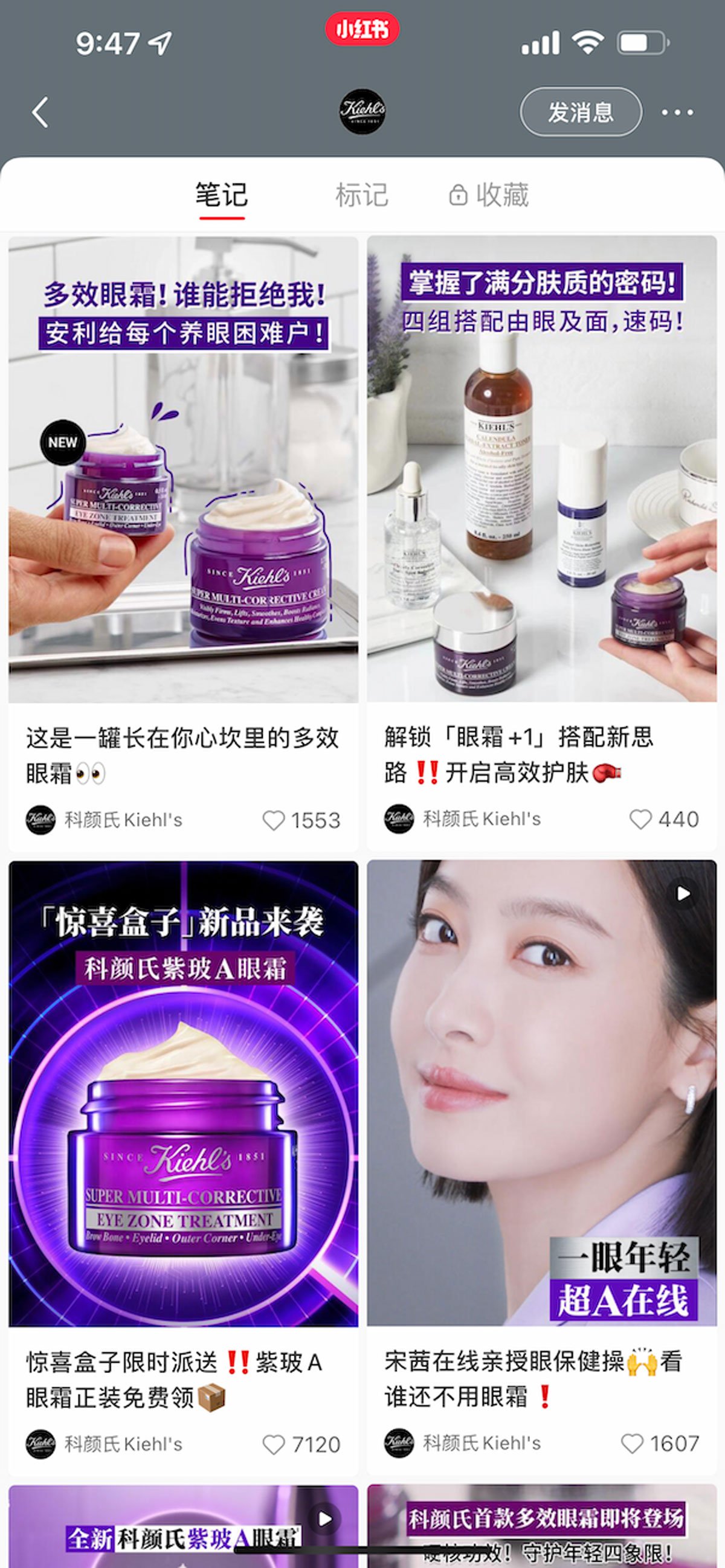Case Study: Here's what the top skincare brand on Little Red Book does to promote its products
What does it take to become the top skincare brand on Little Red Book with the highest number of authentic and organic user experience posts?
Little Red Book recently released their Q1 Brand Performance Report, and for their skincare brand case study as a part of the report, the platform chose to feature Kiehl’s because of the insane amount of growth and viral content that the brand account published during Q1.
In comparison to other skincare brands that are more reliant on advertising on Little Red Book, Kiehl’s was able to generate over 11,000 user-generated posts on the platform. That’s a crazy stat! How did they manage to do that and also generate viral content with just 29 organic posts on their own account in Q1?
Kiehl’s achieved great results on their Little Red Book account, so much so that 10% of their account content went viral.
VIRAL CONTENT
For most brands, hosting giveaways on their Little Red Book account tends to help boost engagement. Our monthly giveaways on Little Red Book for our skincare brand clients have consistently outperformed other organic posts.
However, Kiehl’s has proven that giveaways don’t have to be your only source of viral content. Product posts introducing highly-anticipated products can also get all eyes on your content. Let’s look at the screenshots from Kiehl’s Little Red Book account in the photo gallery below. Can you pick out the posts that have outperformed the rest?
We see that their posts introducing the new multi-functional eye cream have generated thousands of likes versus other posts that only have a few hundred likes. While their post announcing free samples for the new 4-in-1 eye cream generated over 7000 likes, their informative video and photo content also outperformed with over 4500 and 3400 likes.
The interesting thing here is that these 2 posts, with the photo carousel posted first and the video post sharing the same content on the benefits of the new eye cream posted right after it, showed that the brand was testing which content format would perform better. You can see these 2 posts at the top of the fourth photo in the photo gallery below.
ENGAGING INFLUENCERS
Creating, testing, and refining their content isn’t the only thing that Kiehl’s did to excel on Little Red Book and stand out from the rest of the skincare brands in this highly competitive space. Kiehl’s also engaged a ton of influencers to create organic posts about the brand’s products.
If you think of the brand campaigns that happen across North America, where a sizeable brand may send out press kits to hundreds of influencers, Kiehl’s engaged over 8000 influencers in Q1! The brand relied very little on the platform’s advertising component, with just 2.69% of its activity coming from sponsored posts. The organic engagement the brand generated through influencers soared over 11K, with incremental engagement well over 2.7 million.
At this point in Little Red Book’s evolution, we would say that the platform’s algorithm still heavily favours quality content that already gets high organic engagement. If you try boosting a post with low engagement, under 2%, the platform will not allow you to promote it. This shows how the platform prioritizes the user experience of serving their users quality content, even if it is in the form of an ad, versus allowing low engagement, and low-quality content to be shown to their users just because someone had some money to burn.
What if you don’t have the budget and product inventory to engage 8000 influencers like Kiehl’s did? We recommend using a mix of macro and micro-influencers, as well as high-quality content creators (that may not necessarily have a large following but creates kick-ass content). The size of the market you’re operating in, let’s say it’s in Canada, is not as big as the China market, so you can scale down to work with influencers by province or even key cities to make your Little Red Book influencer strategy work with your budget.
A lot of the brand love was generated with organic user posts, which is where Kiehl’s engaged micro influencers to have them share their user experience on Little Red Book.
QUALITY CONTENT
Skincare content is a very sensitive subject across all Chinese social media platforms right now, and you’ll want to check your social content before posting so that your post doesn’t get flagged or removed. If you haven’t been following our Instagram account for snappy tips on how to run and grow your Little Red Book you’ll want to do so now for our quick and easy-to-digest visual updates each week. Here’s a tool you can use to help filter out sensitive keywords, like skin whitening, losing weight, minimizing hair loss, and more.
Below is a graphic that shows the top content keywords Kiehl’s used and which ones generated the most engagement for the brand on Little Red Book. Since Q1 consists of the colder winter months, it’s not surprising that the top content keyword for the quarter is ‘moisturizing’.
As part of the broader Little Red Book report, we did also see that facial care made up the majority of popular skincare content posts on Little Red Book throughout Q1; within the facial care category, face masks were also super popular. So, if you’re a brand that sells skincare face masks, face creams, or other facial care items, you’ll want to focus your efforts on Little Red Book if you’re wanting to sell to the Chinese consumer!
Top 10 skincare keywords in Kiehl’s Little Red Book content.
Review your content performance statistics, influencer strategy, and content keywords on Little Red Book to help grow your skincare brand on this popular Chinese social media platform.
We hope you found the tips and tools useful! If you need help from our Little Red Book Marketing Specialists, get in touch with us at info@catalystagents.com. We look forward to hearing from you!





